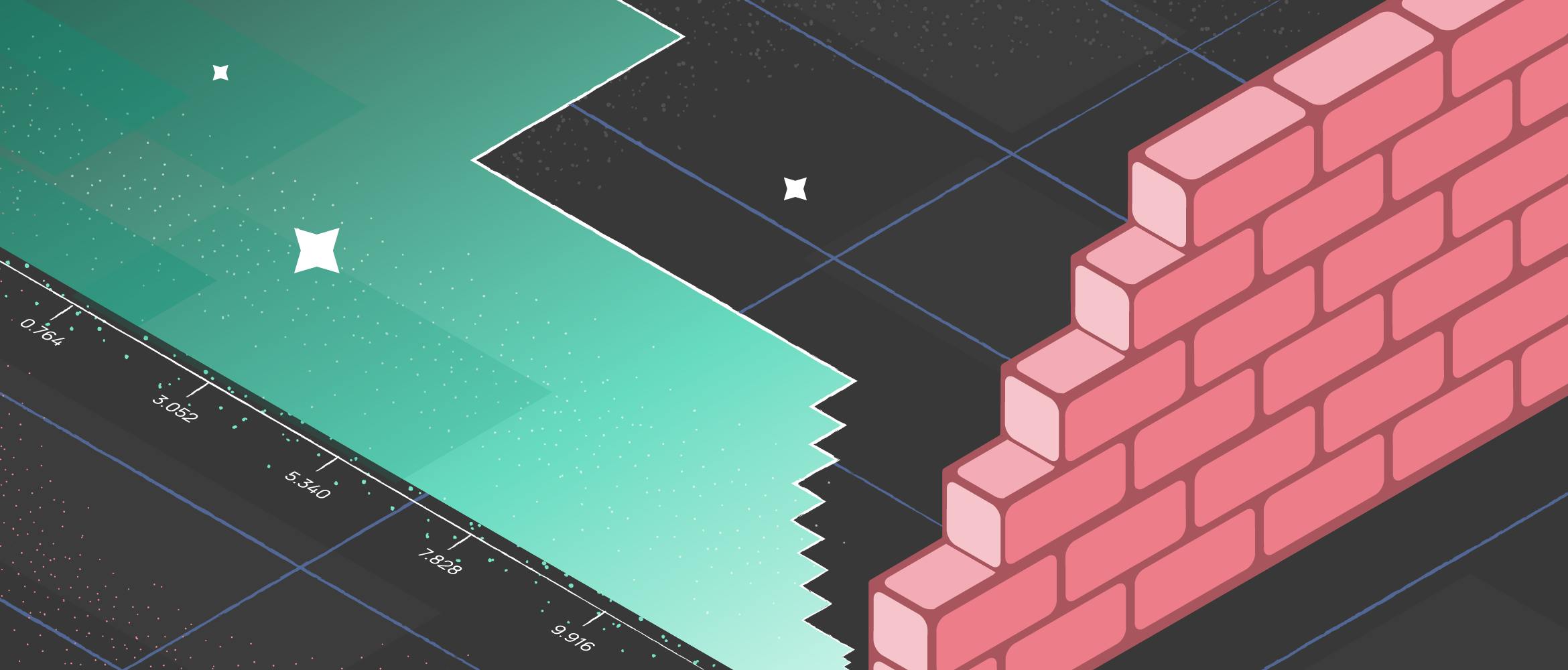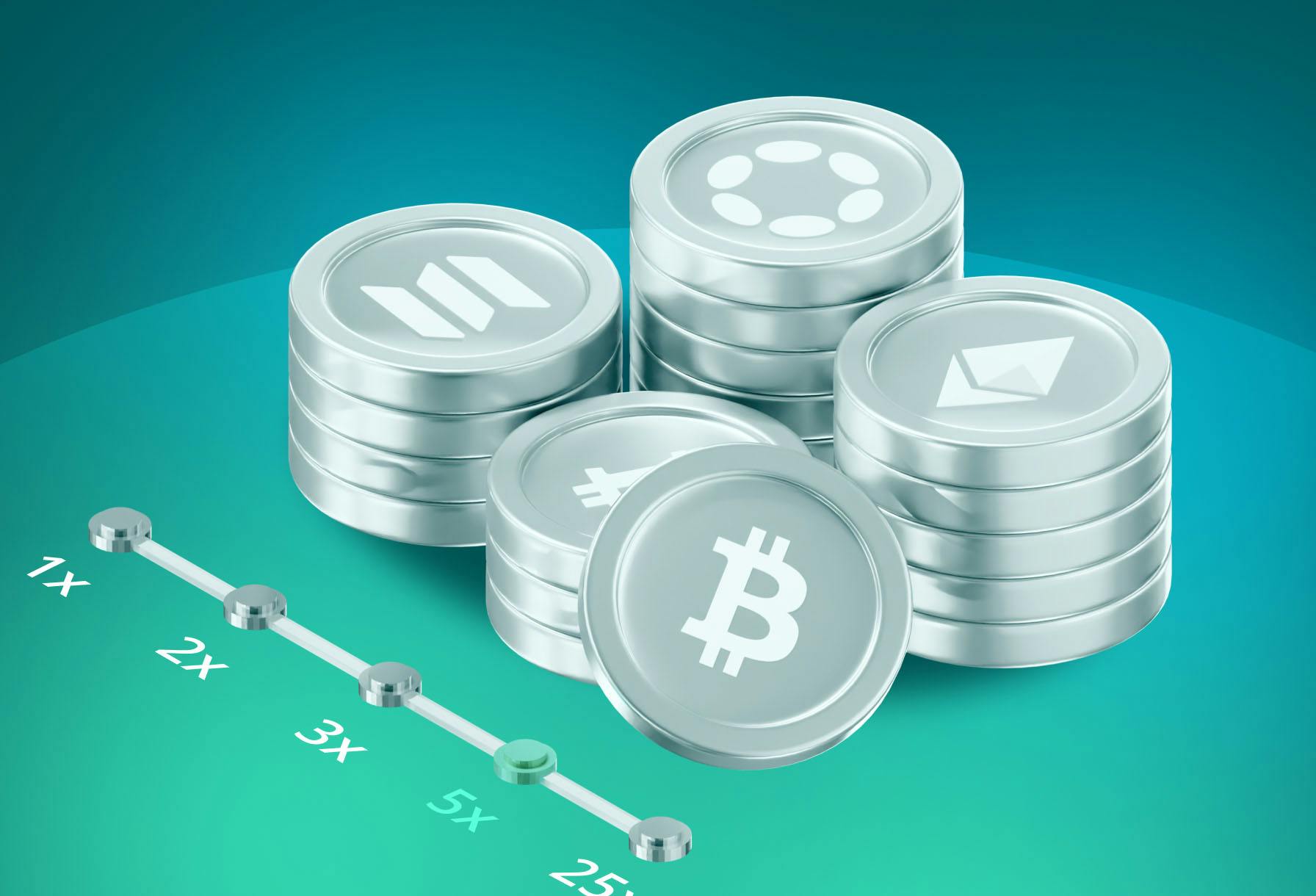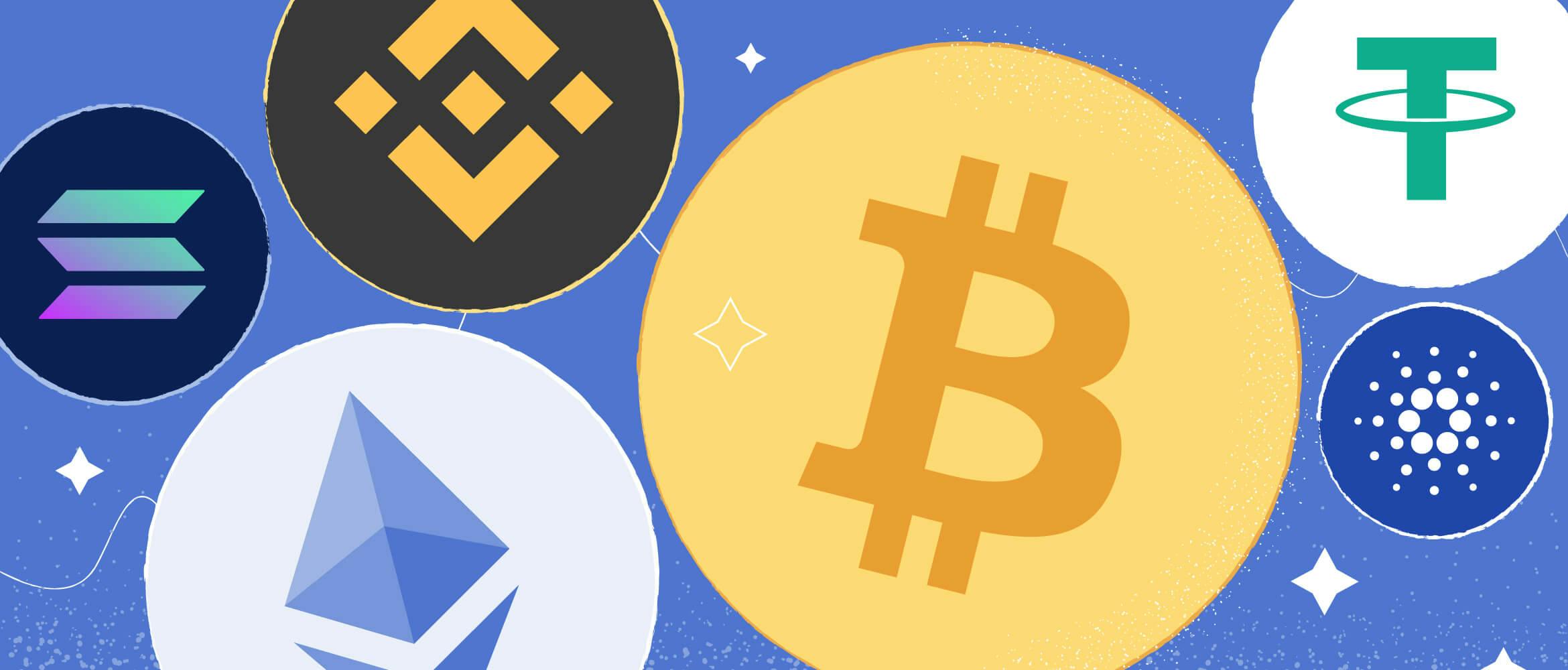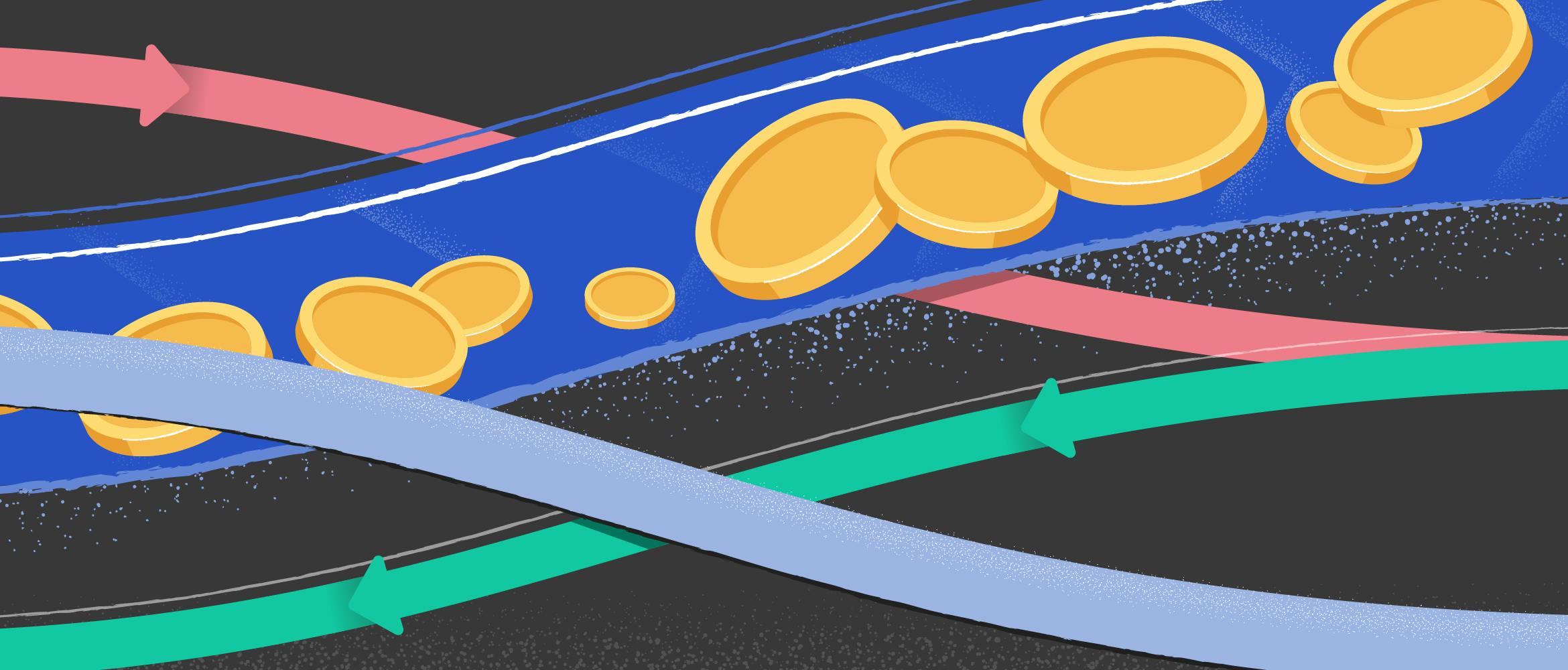
- All
- Analytics
- Technical Analysis
- Trading
- Blockchain
- DeFi
- Guides
- Company News
- Educational
- Opinion
- Price Predictions
- Tools
- Market News
- News
- Trading cases
- Practical guides
- Exchanges
- Trading signals
- Cryptocurrency
- Crypto bots
- Other
Become a crypto master
Learn everything about crypto,
trading and bots

Sell Wall
Start Trading on 3Commas Today
Get full access to all 3Commas trading tools with free trial period

What is a sell wall?
The term "wall" as applied to trading — be it a stock wall or crypto sell wall — is a psychological tool to influence the behavior of other market participants. A large trader (one or more) sets orders to buy or sell a certain asset. In doing so, the wall on the exchange doesn't allow the rate to change relative to the set level.
With such a tool, major market participants control the actions of low and medium cap traders. Generally, smaller traders use whales buy sell indicators to withstand pressure and deal with sell walls, implying the maximum number of sell orders.
Buy wall vs sell wall
Buy and sell walls are common for the crypto market, as they reflect the mood of the market’s participants. Walls allow predicting the trading instrument's behavior in the future, though one should not fully trust them. Let’s boil down some crucial concepts related to buy and sell walls in trading. To leverage the concept, you should understand related terms first. Here is a quick dive-in.
Order Book
The order book is a list of all active (placed on a given exchange) buy and sell orders for a particular coin. This tool allows determining traders' expectations for a particular cryptocurrency. You can see not only the list of orders but also the depth of the market in the book. The bid shows at what price coins can be sold now, and the ask shows at what price they can be bought.
The top bid price and the bottom ask price are of the most interest. Most cryptocurrency exchanges allow you to buy and sell directly from the order book. Typically, a buy wall is marked in green and a sell wall is marked in red. The green wall serves as a support for the price of the coin, while the red wall serves as resistance. Keep in mind that trading on the basis of the order book is more suitable for short-term transactions when we are talking a profit of roughly 5%. You can impose technical analysis on top of the order book for better trading results.
Buy Wall
A buy wall is formed when the volume of buy orders for a particular coin far exceeds the volume of sell orders. You can see a buy wall (charted green) below
The wider/higher the buy wall, the better it is. Its presence is a good sign for potential buyers, as it demonstrates that there are reasonable assumptions about a given cryptocurrency. In other words, a buy wall indicates that traders are more inclined to buy than to sell. When buys overweight sells, there is a race to sell cheap bids. Once the cheap bids are bought back, their place is quickly filled by higher-priced buy bids.
To trade cryptocurrencies intraday, it is important to have a positive sentiment already in place, which can improve trading results. Trading without sentiment complicates profits.
Sell Wall
The sell wall is similar to the buy wall — the only difference is market sentiment, which drives the price in the opposite direction. You can see a forming sell wall charted red below
The presence of this situation portends hard times for a particular cryptocurrency, as a large number of sell orders have accumulated. Selling gradually intensifies, and traders seek the best buy orders. They are followed by the next bids — at lower prices. This process continues until the market reaches an equilibrium. When a sell wall forms in the crypto, you may want to get rid of a long position.
Why are buy and sell walls important?
Significant volumes of buy and sell orders are available in almost all popular cryptocurrencies. In most cases, a coin can be considered sufficiently liquid if it has a trading volume of at least 500 bitcoins on a major exchange.
Many people buy coins low and want to take their profits as quickly as possible. By having a large supply of coins, such big players (so-called whales) can control the cryptocurrency. They do not let the price go above a certain level unless it’s profitable for them. In many cases, the sell wall is a tool to simulate pressure, which is used to keep the price well below its potential. This allows the whales to buy up cheap coins en masse. If someone has enough money to manipulate the price of a particular cryptocurrency, there is a high probability that they will try to do so.
How a sell and buy wall created in crypto?
Let's assume that there are four friends — Satoshi, Vitalik, Brian, and Cameron, who decide to collapse the cryptocurrency rate to buy it at the bottom. To do this, they purchase large amounts of it in various markets. This is done specifically to prevent a sharp rise due to buying up. Then, they start dumping all the tokens they've purchased at a price that is significantly lower than the market price.
In this way, other traders pick up the wave, reinforcing the sell wallt o the point that the volume of purchases cannot bring it down. This phenomenon is because traders seeing a large drop also begin to get rid of the coin in anticipation of a sharp drop.
Buying walls work the same way, only in the opposite order. Manipulators don't sell coins but begin to buy them actively. This, in turn, leads to a rapid increase in the exchange rate.
How to see sell walls
Many people tend to believe what they see. Real buy and sell walls are not formed by the actions of any particular trader. When a significant number of buy and sell orders appear at a particular level, you can expect other traders to place their orders there as well.
Cryptocurrency exchanges themselves rarely create walls unless they are required to do so by contract. In most cases, such contracts concern ICOs. In some cases, developers will agree to buy back a certain amount of coins at a fixed price, but this rarely happens.
In terms of market forecasting, it is important to understand whether there is a particular strategy behind keeping the price low. Demonstrating large buy and sell orders can only be explained by someone else's attempts to control the market.
Creating buy and sell walls is not a commonly used trading strategy. Their appearance is considered a sign of high liquidity. Buy walls are attractive to large cryptocurrency holders who need liquidity to reset their positions.
In many cases, large buy or sell orders appear only briefly and then disappear without a trace. In addition, they may shift up or down, depending on how the market reacts to the formation of the wall. This behavior had become more common since the Mt. Gox order book manipulation a few years ago.
There is no doubt that market makers are still using big walls today, but the effect is marginal in many cases. However, sometimes the big whales use such tactics to create sharp movements in the cryptocurrency "pond." This is done to gain a strategic advantage. Leading the price in a specific direction while the "small fish" are chaotically rushing in different directions, the big player increases the coin's liquidity. This increases the attractiveness of the coin, which makes it possible to trap smaller players into committing rash actions.
Fictitious Wall
A day trader dealing with short-term crypto needs to play it smart because whales can manipulate the market. These are traders with so much capital that they can place buy and sell orders at a certain price, large enough to have a low probability of execution. Whales can set lower and upper limits for future price movements.
A fictitious wall usually has a sharp rise at a specific price; it doesn't rise smoothly. In most cases, an order is placed at the lowest current price to sell or the highest current price to buy. Such walls are called fictitious because the trader placed a big order can cancel it at any time. Trying to convince other market participants that a movement in a certain direction must occur. Such a wall creates a false idea about the market sentiment that nothing can support.
Whales place large sell orders that can't be executed, but they keep the price from rising. In doing so, they buy coins cheaply. Once they have accumulated enough coins, they quickly cancel their order, which leads to a spike in the price if (without that order) positive sentiment prevails. Thus, the whale makes money by tricking traders into selling coins cheaply.
Whales can also use large orders to find coins where the pumps &dump can be implemented. Such speculation can be profitable for those familiar with pumping, but it's dangerous for everyone else. Whales are looking for junk coins with low trading volumes and minimal sell orders. High buyer activity is not necessary for pump-prone coins to grow. Therefore, coins with low volumes and little resistance are used.
What is good about sell wall crypto?
The upside of a sell wall is that there is a lot of liquidity since there is a volume to sell. However, there is no purpose to have active sell orders for crypto if there is insufficient buying pressure. It might be a losing coin. This is partly due to the fact that the liquidity may signal that the whales are dumping their coins on the market to get rid of them as soon as possible. So, if it smells awful, don't accept the bait.
Depth Chart Trading & Crypto
Market depth is a measure of whether the market has a large number of pending orders that can absorb the orders being created. For example, if the market has low depth, it means that there are few pending orders open in the cryptocurrency. If you decide to buy a very large amount of that coin, the market will instantly go up because there are simply not enough people who want to sell that coin, and therefore you need to motivate people to sell to you. You can only motivate with money. And the high depth is when there are a lot of pending orders in the market.
Even if you create a massive order with high depth, it's easy for other players to absorb it.
Sell wall trading in crypto
The cryptocurrency markets are still young, so this kind of manipulation is quite easy to implement if there is enough money. By identifying false walls, one can watch what the big money is doing and how the whales are buying at the bottom. If a trader has already bought a coin and noticed a sell wall, one should not panic and get rid of the trading position. It is better to buy more on a pullback. It should be noted that such walls are too noticeable, so professional whales do not use them. Experienced players disguise their actions when they lure out cheap coins from the crowd.
Does this mean that a trader should buy when a false sell wall appears in order to take advantage of the price spike after the wall is removed? This is a logical but flawed idea. In fact, the opposite should be the case. A trader always has to take certain risks, but trading an artificially created price movement is very dangerous. There are chances to be lucky, but the probability of losses in such a game is much higher. Those who are looking for a safe, slow, and steady rise are better off working with coins in which you can see the real sentiments of traders.
Nevertheless, it is also possible to buy a coin that is actively selling, as long as the risk per trade does not exceed 10% of the daily loss limit. This is a good approach to money management in this case.
How to read buy and sell walls
Fortunately for many traders, the sell wall doesn't form instantly — it grows in stages, so you can track it. To do so, you need a depth chart — a graphical depiction of buy/sell orders for a certain asset, any given timeframe. A depth chart depicts both supply and demand to demonstrate how much of an asset you can sell at a given price point.
Let’s define key components of any depth chart.
Depth chart components
While depth charts can vary, they all have several components in common.
- Bid Line. The bid line shows the cumulative value of the bids, or buy orders, at a given price point. It is represented by a green line sloping negatively from left to right. Buy orders can be placed in several currencies, depending on the trading pair you choose. For example, if you trade ETH against USDT, the bid line would be placed in USDTs.
- Ask Line. The ask line represents the cumulative value of the asks, or sell orders, at each price point. It’s shown by a red line sloping negatively from right to left. Sell orders can be placed in several currencies, depending on a trading pair you choose. For example, if you trade ETH against USDT, bid line would be placed in ETH.
- Horizontal axis. The price points at which buy and sell orders are being placed.
- Vertical axis. The aggregate dollar value of all Ethereum sell orders placed. The total dollar value of all buy orders is represented on the left vertical axis
How to read Binance depth chart
Trading depth chart increases your chances for profits. That’s why Binance exchange offers a convenient depth chart. You can access that chart by clicking on the Depth button shown below
Once you click on the button, you will see a graphical representation of bid/ask ratio.
On the left (green) side, you can see the lowest buy order that purchasers hope the asset would reach so that they can purchase it cheaply. The maximum sell order that sellers hope the asset would achieve so that they may sell it for a huge profit is shown on the right (red) side.
As soon as you see a vertical line begin to grow on the chart of sell or buy orders, begin to react. If the number of sales rises, prepare for a precipitous drop, if the number of purchases rises. It is worth understanding that immediately after the artificial fall or growth follows an equally rapid reverse process. After the collapse will always come growth, if the project is initially worth attention. So it is with artificial growth — the coin always comes back to the initial mark.
How to use sell walls?
Spot a sell wall first. Are there any big projects that are solving a particular problem, have good technology, or are waiting for good news ahead of rising prices? Take a look at the depth charts on the exchanges to see if there are really big sell walls out there.
Then just buy up to your eyeballs (within what you're willing to spend and lose, of course, because there's always a risk) and walk around until the whale is done accumulating fat. The wait is almost always worth it because once the wall is removed, the price will quickly fly up.
Or the wall will be swept away by the pressure of those who want to buy crypto, and the whale will be left with nothing.
Example
If you want to sell 1000 satoshi coins, but you see a big sell wall at 1100, it is better to place a sell order at 1050-1090. By placing the order in advance, we increase the chances of its execution. The selling wall in the order book can be seen as resistance since it would take a lot of buying to get past that level. Over time, the buying pressure will be so great that a sell wall collapses.
Final word
As of 2023, trading in the cryptocurrency market remains heavily influenced by various factors, and one of the most prevalent is the presence of buy and sell walls. These walls, often formed by influential market participants known as whales, can significantly shape the short-term trajectory of an asset's price. Buy walls serve as support levels, indicating a bullish sentiment towards a cryptocurrency, while sell walls act as resistance points, suggesting potential price declines.
Gaining proficiency in reading the order book and depth charts is indispensable for traders keen on accurately interpreting these walls. Through a careful analysis of the depth chart, traders can discern the supply and demand dynamics of an asset at distinct price tiers, which aids in making enlightened trading decisions.
However, it's paramount to recognize that not all walls are genuine reflections of market intent. Some, termed as 'spoofing walls', are merely strategic ploys, set up to deceive and manipulate other traders. Such tactics can steer traders into actions that advantage the entity behind the wall. Hence, caution is advised, and traders should base their decisions on a holistic market assessment, not solely on the visual cues of these walls.
In closing, while buy and sell walls offer a fascinating lens to view market dynamics, the inherently volatile nature of the cryptocurrency market in 2023 mandates that traders undertake comprehensive research, employ sound risk management strategies, and avoid basing decisions on the mere existence or absence of these walls.

A proven leader, successful at establishing operational excellence and building high-performance teams with a sharp focus on value creation and customer success.




